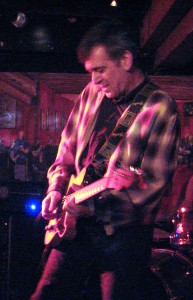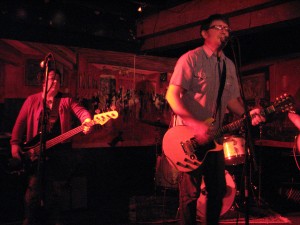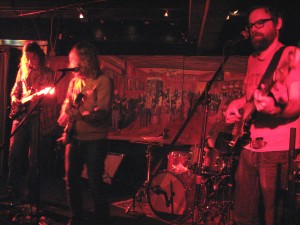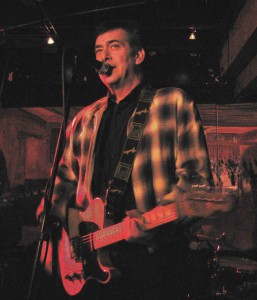
Seatown seemed a fitting stop, then, for eternal guitar wunderkind Tommy Keene on a week-long jaunt up the west coast. On a Saturday night at the city’s most pop-revering establishment, and sandwiched between two top-notch acts, one of the country’s most under-exposed great talents delivered a speaker-rattlling tutorial on how a pop-rock show should sound and feel like.

Acknowledging the presence of greatness, The Americana-accented Riffbrokers brought their “A++” game, interspersing some of their best material among offerings from their new EP, The Green Key Will Let You In. Longtime friend and Seattle music veteran Chris Cline had been recently added on second guitar, and a perfectly seasoned sense of melody and “place” was evident in his playing. A nice addition to a perenially promising, yet underdog outfit whose salad days are still ahead.

And it was so effortless, the Red Heads’ set on this night. They’ve had years of practice, but the songs — well-crafted, compelling stuff — nonetheless spilled off the stage as if the band was sitting around a campfire. Frontman Evan Way has the sort of voice that really sticks with you, and the Red Heads exude the sort of warmth that’s impossible to not get sucked into. Altogether a great performance by a band that’s been places, but is headed for loftier elevations.
In between such memorable performances, Tommy Keene lit the place on fire. Arriving in a cab shortly before showtime, battling a nasty flu, the 40-year music veteran played as if he were at a command performance in a concert hall.
A concert hall with some minor technical difficulties, that is. After a few buzzes, squeals and adjustments early on, the sound pumping off the stage got better and impossibly better as Keene’s set progressed.

“Diehard fans” might be an insufficient term for those in Tommy Keene’s cult of followers. A fellow staked out his place at the lip of the stage well in advance, his Baltimore Orioles cap representing shared roots in Maryland — where Keene was a top draw on the greater D.C. circuit before landing a major label deal in the early 1980s. Between songs, a woman in the crowd proclaimed her adoration, adding that she’d seen Keene open for the Style Council in ’84; it was rumored that a contingent of fans had flown cross-country for the occasion.
Backed by longtime Keene bassist Brad Quinn, along with Rob Brill (who was drumming in Berlin about the time Keene was opening for the Style Council), one of rock’s most under-appreciated storytelling guitarists concentrated on new material from the fabulous Behind The Parade album.
Second guitarist Jon Brill assisted Keene in transforming “Nowhere Drag‘s” tumultuous coda into a full-blown maelstrom (wow, what a song, it should be his new calling card); the twin-guitar attack continued with the aforementioned “Places” and upped the ante during an old Keene standby, a ferocious cover of Lou Reed’s “Kill Your Sons.” As the number — and his set — drew to a close, the singer hopped off the stage and riffed among the fans as far as his amplifier’s tether would allow.
The notion of “it doesn’t get much better than this,” was doubtlessly floating through a number of noggins as the lights went up and the crowd began to sort itself out. Within minutes, as cigarettes were lit in the chilly air out on the sidewalk, the other commonly held thought, “Why isn’t Tommy Keene a major star?” began to be ritually discussed.
It was a very good question.


